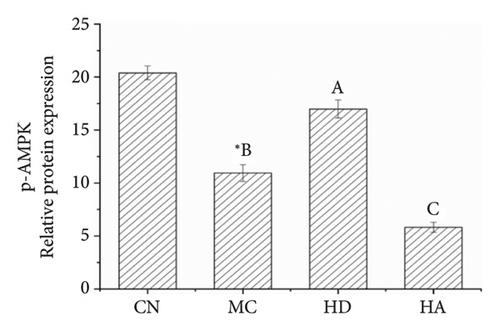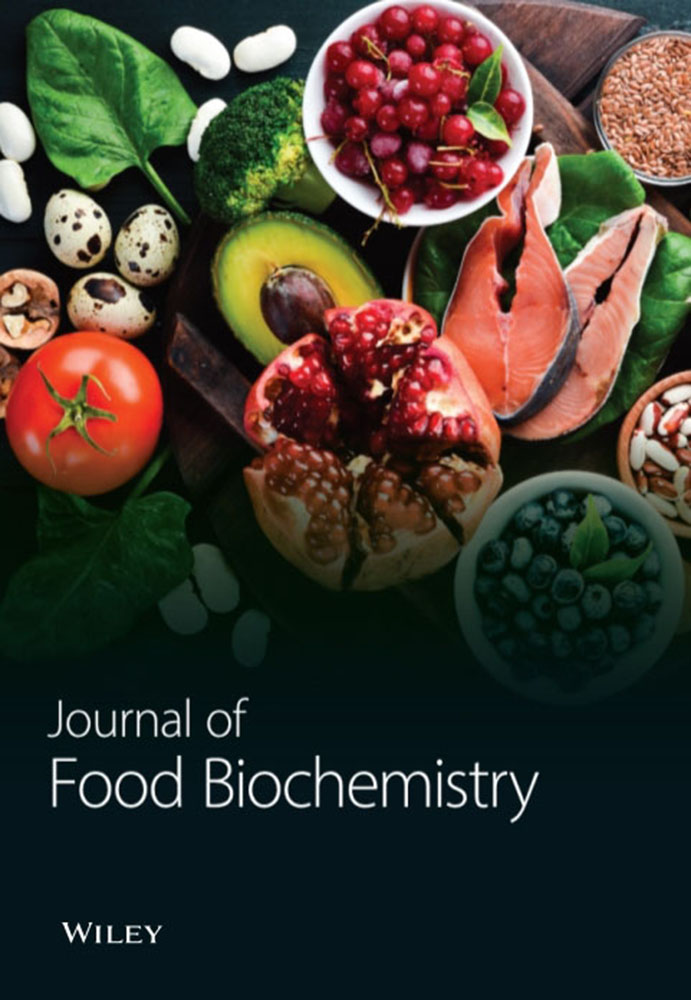羟基-α-山舒尔通过激活 AMPK 信号维持高脂饮食肥胖小鼠的肠道健康
IF 3.5
2区 农林科学
Q2 BIOCHEMISTRY & MOLECULAR BIOLOGY
引用次数: 0
摘要
为了探索羟基-α-山嵛醇(HAS)对高脂饮食喂养小鼠肠道健康的影响,我们将小鼠分为对照组(CN)、模型组(MC)、HAS(8 毫克/千克体重)组(HD)和 HAS(8 毫克/千克体重)+化合物 C(10 毫克/千克-4 天)组(HA)。治疗 4 周后,小鼠在牺牲前禁食 12 小时,并提取解剖样本进行分析。生化、微生物群组成和代谢组学分析表明,HAS 通过激活 AMPK 改善了炎症和代谢失衡。这些研究结果表明,HAS 可以通过 AMPK 介导的氨基酸代谢维持肠道健康。本文章由计算机程序翻译,如有差异,请以英文原文为准。

Hydroxyl-α-Sanshool Maintains Intestinal Health in Obese Mice Fed a High-Fat Diet by Activating AMPK Signaling
To explore the effects of hydroxyl-α-sanshool (HAS) administration on the intestinal health of high-fat diet-fed mice, mice were separated into a control (CN) group, a model (MC) group, a HAS (8 mg/kg bw) (HD) group, and a HAS (8 mg/kg bw) + Compound C (10 mg/kg·4 d) (HA) group. After 4 weeks of treatment, the mice were fasted for 12 h prior to sacrifice, and autopsy samples were taken for analysis. HAS improved inflammatory and metabolic imbalances by activating AMPK, as shown by biochemical, microbiota composition, and metabolomics analyses. These findings suggest that HAS can maintain intestinal health through AMPK-mediated amino acid metabolism.
求助全文
通过发布文献求助,成功后即可免费获取论文全文。
去求助
来源期刊

Journal of Food Biochemistry
生物-生化与分子生物学
CiteScore
7.80
自引率
5.00%
发文量
488
审稿时长
3.6 months
期刊介绍:
The Journal of Food Biochemistry publishes fully peer-reviewed original research and review papers on the effects of handling, storage, and processing on the biochemical aspects of food tissues, systems, and bioactive compounds in the diet.
Researchers in food science, food technology, biochemistry, and nutrition, particularly based in academia and industry, will find much of great use and interest in the journal. Coverage includes:
-Biochemistry of postharvest/postmortem and processing problems
-Enzyme chemistry and technology
-Membrane biology and chemistry
-Cell biology
-Biophysics
-Genetic expression
-Pharmacological properties of food ingredients with an emphasis on the content of bioactive ingredients in foods
Examples of topics covered in recently-published papers on two topics of current wide interest, nutraceuticals/functional foods and postharvest/postmortem, include the following:
-Bioactive compounds found in foods, such as chocolate and herbs, as they affect serum cholesterol, diabetes, hypertension, and heart disease
-The mechanism of the ripening process in fruit
-The biogenesis of flavor precursors in meat
-How biochemical changes in farm-raised fish are affecting processing and edible quality
 求助内容:
求助内容: 应助结果提醒方式:
应助结果提醒方式:


